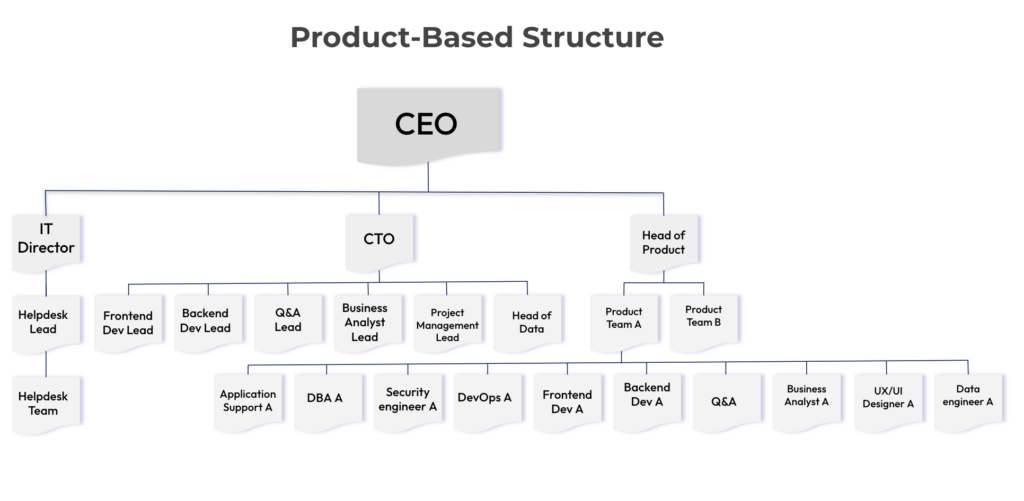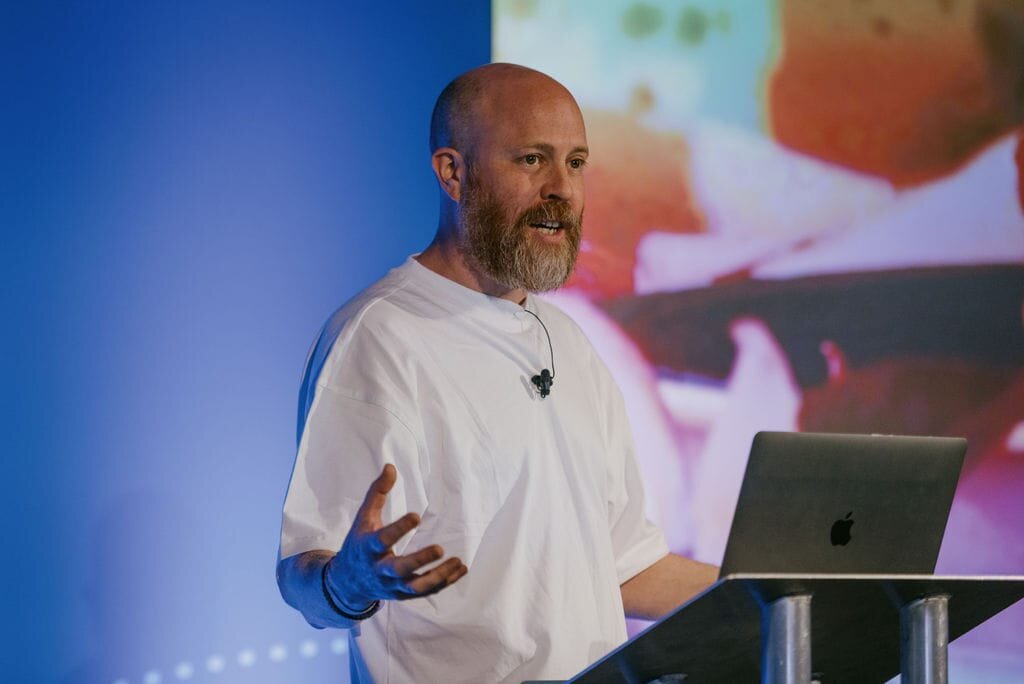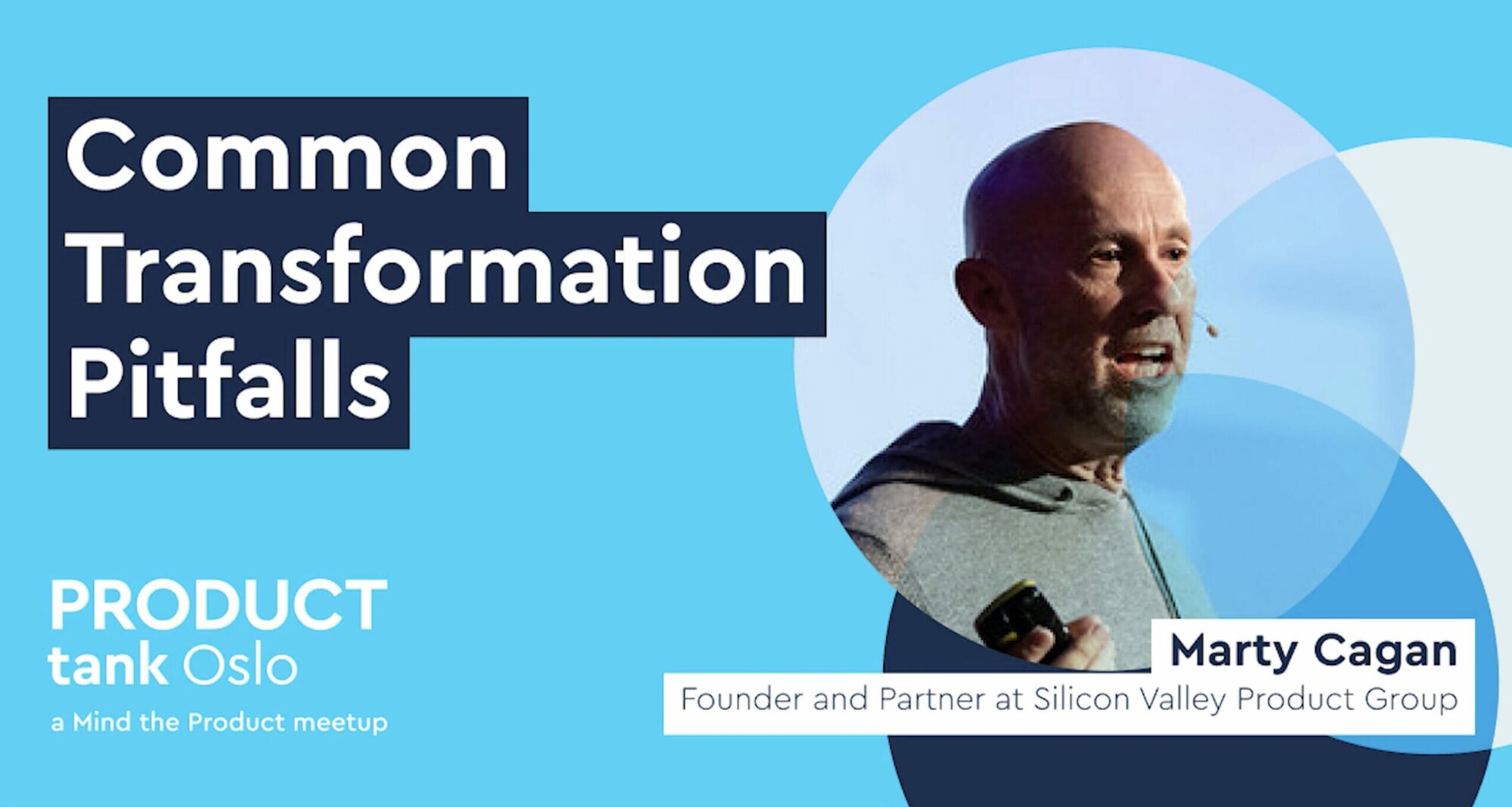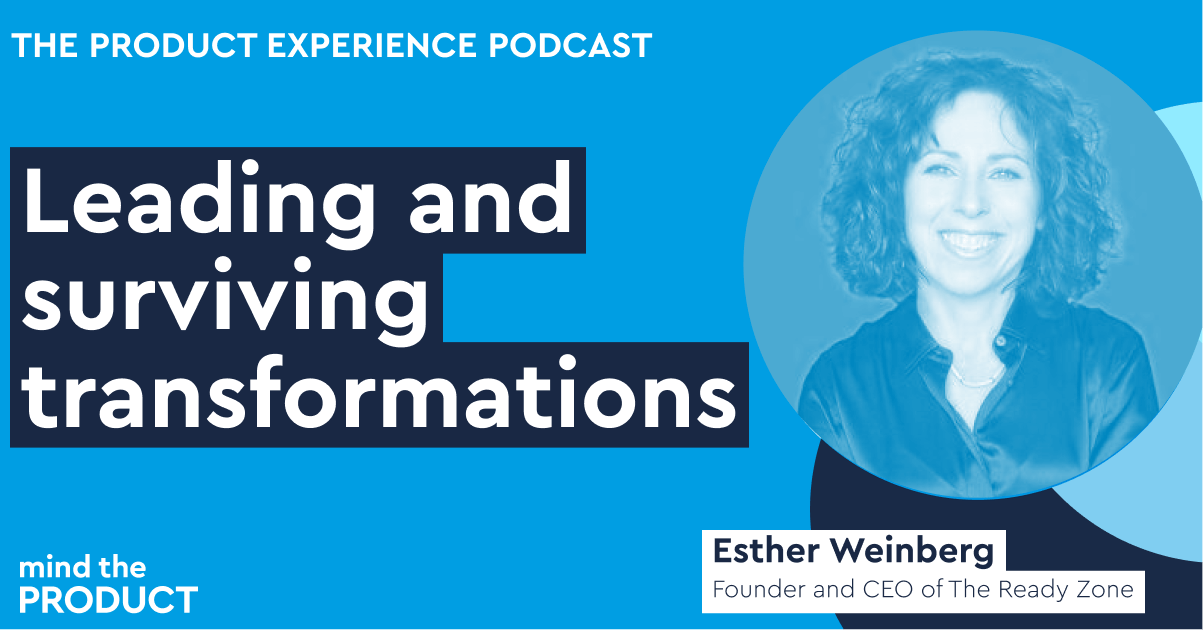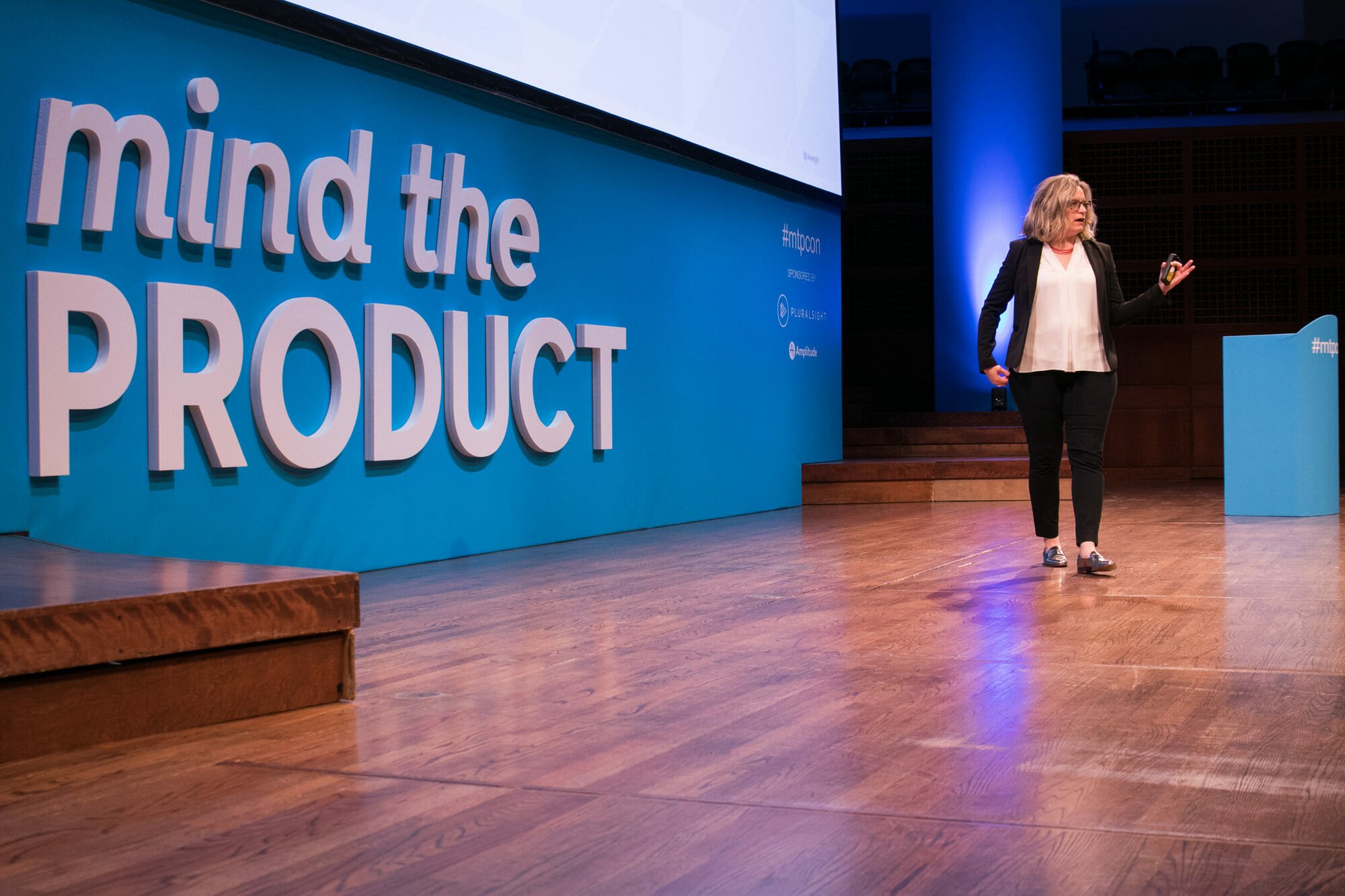If you're working in an organization that's resistant or slow to transform from project to product thinking, you are not alone. I see it all the time and in this post, I'll suggest how you can become the driving force for change, and show your company the value of a product mindset, in an effort to accelerate the change and win over even the most resistant partners across the organisation.
Organic Evolution or Disruptive Revolution?
Company leaders may make the decision to shift to an agile product mindset believing that they can take an organic evolutionary approach rather than force a disruptive revolution. While this can be less disruptive in the short term, it will take longer to change the ways of working required for success. An organic approach requires there are a few teams that are ready and able to make that shift — I want that to be you and your team.
Organic evolution
Here’s what this looks like in real life, from a recent client of mine.
Over two years, this company identified people who were willing to try a different way of working. They hired and trained strategically. They pulled in product thinkers from outside the organization and brought the most forward-thinking IT leaders together with the most forward-thinking business leaders and said, “let's try it.” Those teams were successful, and the business saw enough value in this approach to continue to invest in it.
However with this approach there often comes a point where organic growth hits a wall – the people who are really resistant to the change. When you hit this resistance you'll never close the deal if you wait for organic growth.
Disruptive revolution
A revolutionary approach is faster and far more disruptive. It can allow companies to rewrite the script and say 'we are going to reassemble our products, our funding, and our teams, get on board'.
This approach is not without drawbacks, however. All teams learn and establish new norms at the same time, and this amount of disruption can cause pockets of resistance to further entrench themselves — creating different challenges for product people.
Neither evolution nor revolution
More common than the above approaches, companies may have pockets of people who work in a project-focused manner, and realize that there's a better way to build, maintain, and evolve their platforms and services, that will better meet customer needs. It might be someone from the Project Management Office (PMO) who is exploring agility and design thinking, and looks for opportunities to take on work that allows for more iterative, customer-focused cycles. It might be an engineering manager who is navigating the space between their business partner’s desire for predictability and the developer’s desire for smaller chunks of functionality, delivered faster.
Driving change from the middle
It can feel overwhelming to know what you, as a product person, can do to drive change and become the proof that a product mindset can be successful in your organization. Don’t feel defeated: you are the MVP your company has been waiting for. You can be the person to show everyone else the value that a product mindset could deliver for your company.
Try some stuff out as a side project. Demonstrate how it can work, and bring some people along with you. It might be a case of saying “I know this feels weird but let's just try it in a small scale, low-risk environment and see what happens”.
1. Seek out training and mentoring
You can also consider training for product owners and product managers to help you with the framework and basic approaches. Many training sessions ask people to bring their real-life problems, so bring your ideas for where the product mindset might be successful, and use the training as a sandbox to play it out and plan what a product approach might look like.
Using real-world examples and best practice can demonstrate to your leaders that you are grounding your approach in an established professional context.
Access product training today
If you're reading this article, you're a Mind the Product member which means you're already prioritising your product career and have access to our self-paced training library — a set of product training modules you can return to time and time again.
Use the courses in this library to:
- Assess your product skills
- Discover how to drive the goal-setting process
- Conduct successful interviews
- Implement an effective testing structure
- Develop your prioritisation skills
- Manage your stakeholders
Should you want to take your learning even further, you can explore our expert-led training workshops — two half-day, interactive workshops, designed to help you hone your craft, where you’ll be coached through your product challenges by an expert trainer.
2. Challenge and support your partners at the same time
You can’t just set some new processes and wait for your stakeholders to fall in line. You will need to challenge your partners to change their behaviors in support of a product mindset. However, you can do this while giving them the support they need to learn a new way of working.
For example, a product manager I recently worked with who was leading a B2B product team, tried this approach with much success. Her organization’s front-line account and sales people had the habit of taking their break/fix items for the product (which often ventured into new functionality territory) straight to developers. As a result, she couldn’t see a huge chunk of the work that was eating up a significant portion of her delivery team’s capacity. She knew that she needed an intake process, but also knew her account reps were not enthusiastic about changing their approach — going straight to the developer reaped rewards for them so far.
Instead, the product manager won her delivery team over to the idea that having a full view of all work coming in would mean they could have a more predictable and efficient work pattern. They all agreed that they would continue to take calls from anyone on the account team, and simply say “thanks – I understand what you’re asking for, I’ll get it on the board and will let you know who’s working on it and when they’ll be tackling it”. Then it went into a more complete backlog for solutioning and assignment, the work got done, and the account reps were happy. The product manager ensured the work was done with minimal delay, as before — but now the developers were functioning as a team and picking up work where skill sets and capacity made sense, rather than a knee-jerk response from whoever answered the call.
She knew she had succeeded when the account reps started to say, “hey – I have something to put on the board” and at this point the team formalized the idea of intake (for maintenance or for new functionality). Their partners had realized that their ideas would be heard and their needs met through a consolidated backlog, and that putting ideas into the queue via a single point of contact meant that the work was flowing, just in new ways.
3. Look for small wins
Small wins lead to big wins, so take anything you achieve as a sign of progress. Maybe you ran a mini design sprint to solve a problem that stood in the way of making progress, or broke down a big chunk of work on a Kanban board on your wall. The key is to look for moments of opportunity where you can experiment and still keep progressing on your priorities.
Demonstrate your successes to anyone who will listen (particularly to your leadership) and explain why you’re seeing them. As you can prove that these methods work in small doses, you can make the case to your leaders to allow you to expand them to bigger chunks of work.
4. Find allies
As we know, product management is a team sport which means driving the shift alone is going to be very difficult indeed. It’s likely, however, there are a handful of people on your team who are open to new ways of working — seek them out. These people can help you as you search for small opportunities to try out different ways of thinking. I’ve seen teams start with an optional lunchtime book club (using a product/agile book as a starting point) that turned into an experiment with different tools.
It's worth looking for support in the product community too. ProductTanks are free to attend and you'll find people who have gone through or are experiencing the same challenges as you. Learn more about ProductTank and find your local meetup.
5. Change the narrative
When leaders clinging to the old ways of working ask you for time and budget for your work, don’t leave them hanging. Add in the things you want to communicate as a part of the product mindset, like the value their investment is driving. For example:
Because we focused 25 hours last month on fixing X issue, we have seen a 5% decrease in service calls on related issue Y
Here are two examples from product managers I know:
Aaron, product manager for a data and analytics platform
“We were having a tough time getting our stakeholders to think of our emerging product team in terms of value, rather than a team of order takers that just build what’s asked for.
In a recent planning session, as we were trying to prioritize the work, we asked stakeholders to make bets on what they thought they could do if they had a particular feature. For example, “if we built X, I think we could convert 5% more single product customers into multi-product customers. That 5% would mean about y% increase in revenue for the quarter”. We logged that bet and all the others made, and ranked them. The bigger values were worked on first, and now we have a leader board of the stakeholders to see whose bets are realized.
This accomplished a few things: first, it changed the nature of the planning conversation. It reduced the occurrence of “because I said so” and turned the stakeholders into value sleuths for the product team. Second, it was fun. These are competitive people, and they like nothing more than to beat their colleagues in some friendly competition. And – it moved the whole team into hypothesis thinking in a really energetic way. It was a game-changer for us.”
Lisa, IT finance and planning executive
“We were trying to bring our executive team along on thinking about prioritizing resources against value, but they were really stuck in the project-based, spread the capital around mindset.
We got them all together and used the ‘Jedi Mind Trick’ of relative prioritization. We made huge posters of all the PROJECTS that we had green lit for the year, and unbeknown to them we laid them out into what we were starting to think about as our PRODUCT taxonomy. We gave each executive a sheet of dots to use as votes – where did they think we needed to focus our attention? There were not enough dots to spread to every project, so they had to choose wisely.
In the end, we had a heat map of executive focus and priority, and when we put up the capital allocation for projects, they started to see that they had too little money allocated to the things they all agreed were most important, and too much on things that got few or no votes.
It snapped them out of their approach to funding, and we took that work and turned it into a priority review in our MBR and QBR meetings. That exercise marked the shift in our thinking from Project to Product.”
6. Don’t wait for someone to tell you to start
Start articulating your work in terms of values, outcomes, iterations, roadmaps, and priorities. Even if you are the only one using these tools, start using them to demonstrate how you work differently but continue to deliver what is asked for.
You could also schedule a demo, even if you’re not yet working in agile. Start monthly, schedule it for the same time, with the same people, using the same format, and use it as a chance to show off to your stakeholders the work that was completed in the last period. Soon, people will come to expect that you are going to bring them incremental examples of work completed and value delivery. At this point, you might introduce some prioritization and roadmapping exercises to give your stakeholders a chance to shape your future demos.
7. Don’t create drama where there isn’t any
Refusing to go along with project management or legacy planning processes won’t win you any friends. Try to take a parallel path: “As long as I have you here, I want to show you something I’ve been playing around with,” — you can demonstrate that you’re on time, on budget, and on track to deliver your project, while layering in small doses of product/Agile thinking.
Be the MVP your company has been waiting for
Don’t despair if you’re in an organization where you currently feel like doing any of this would be impossible. With the knowledge you have, you can make changes, even if they're small at first. Show how a change can add value, better customer experiences, faster delivery of value, better employee experiences What company doesn't want these when they really understand that they’re possible?
Take a “how might we” mindset and apply it to your team’s work. Consider where you could experiment with a different workflow, where there’s low risk and some space to play. Then explain this to your team and your leaders as you go. If they see you doing it, and see that the outcomes are (at the very least) on a par with or better than current state, then the expansion of your self-made pilot can grow and expand.
If you've already started, we'd love to hear how it's going. Use the comments section below to share what's worked well for you and your organisation. Perhaps you have a case study to share? If so, we'd love to see that too! Email us at editor@mindtheproduct.com.


